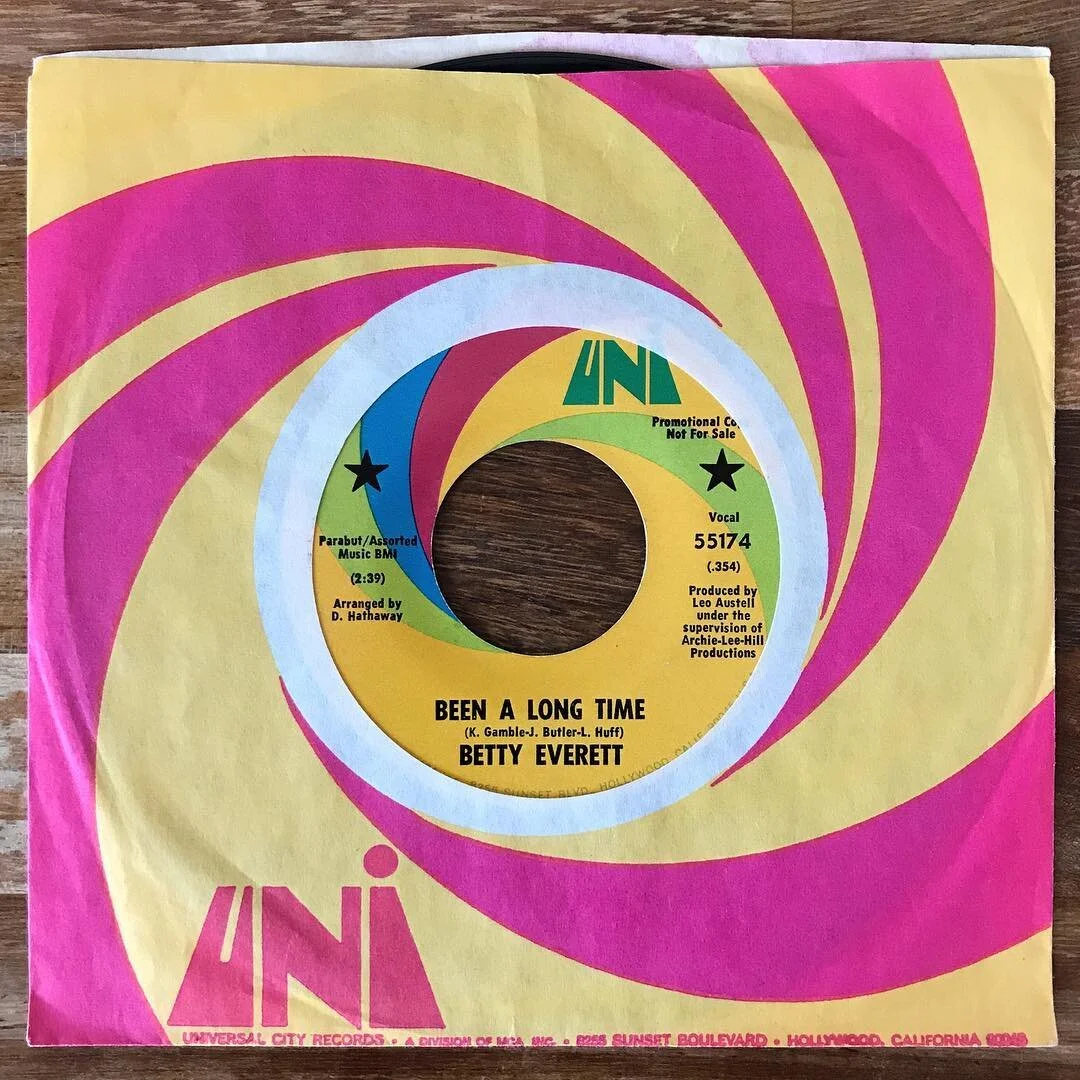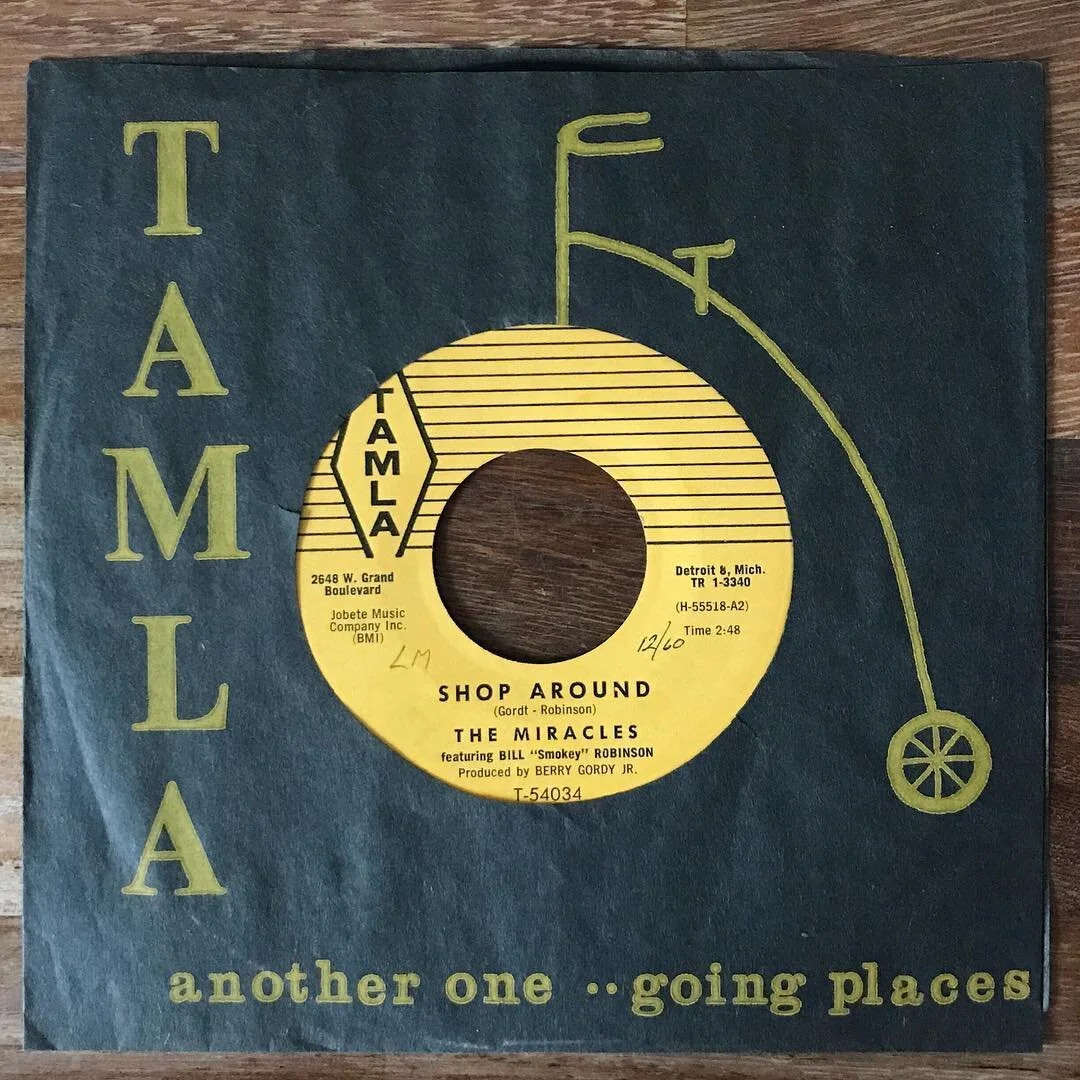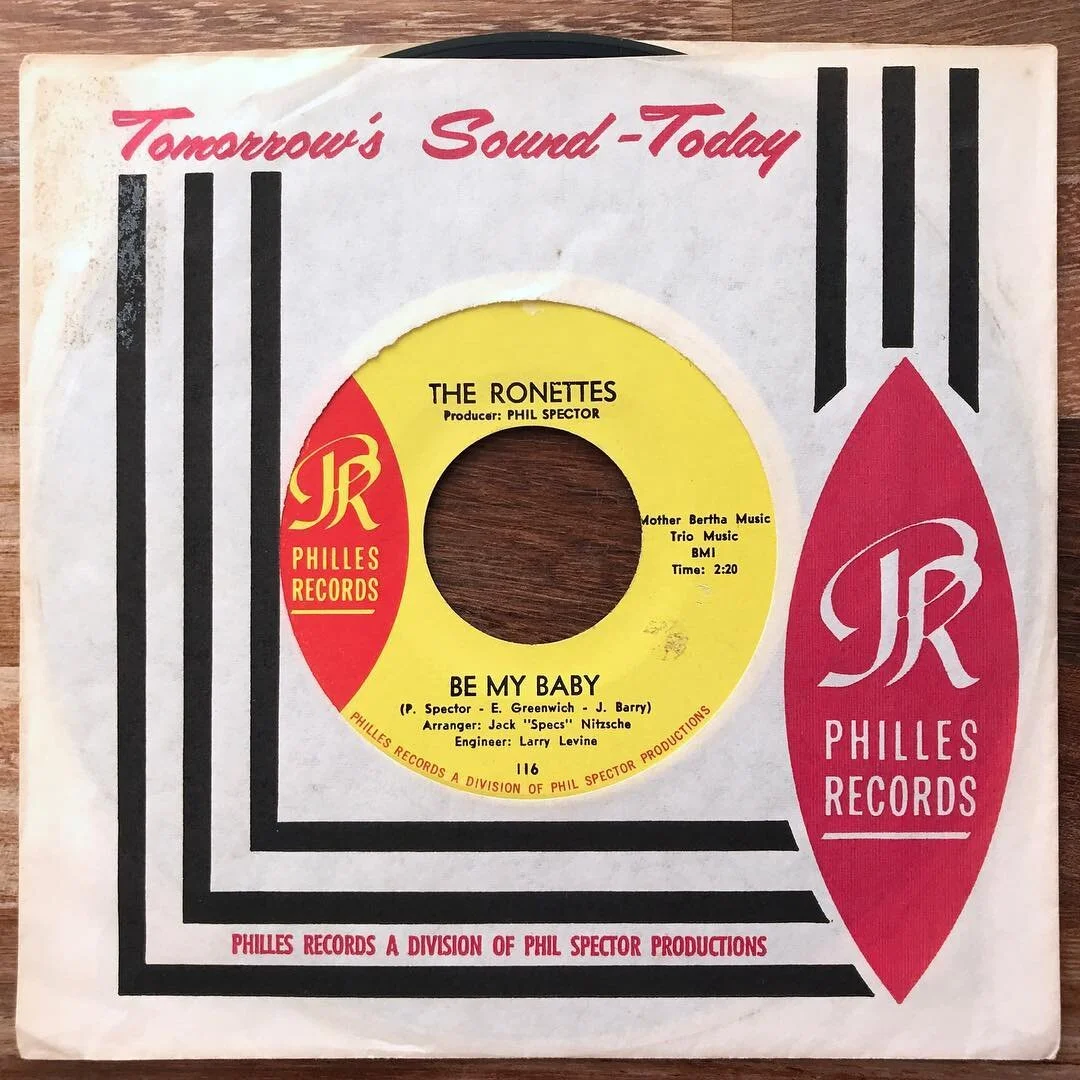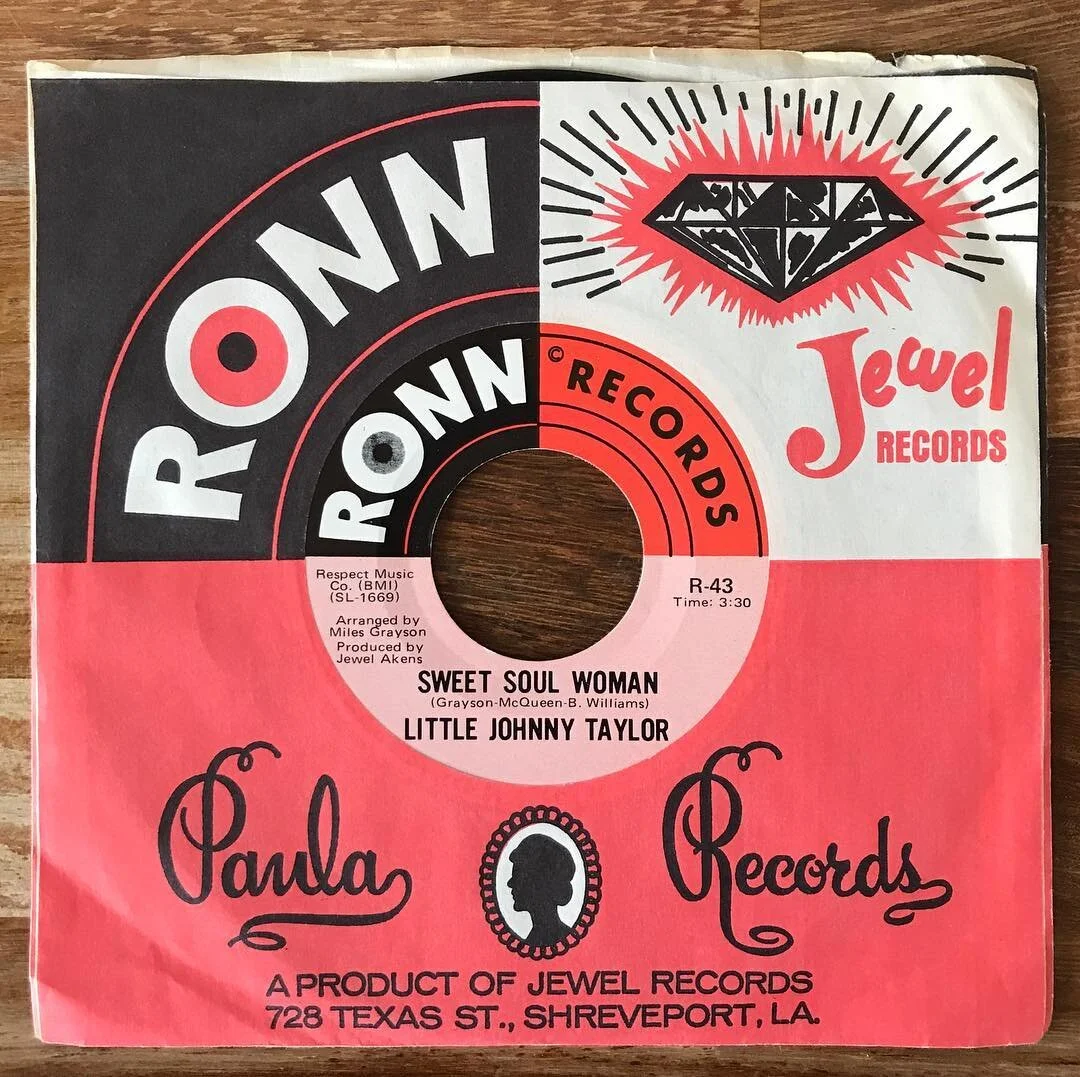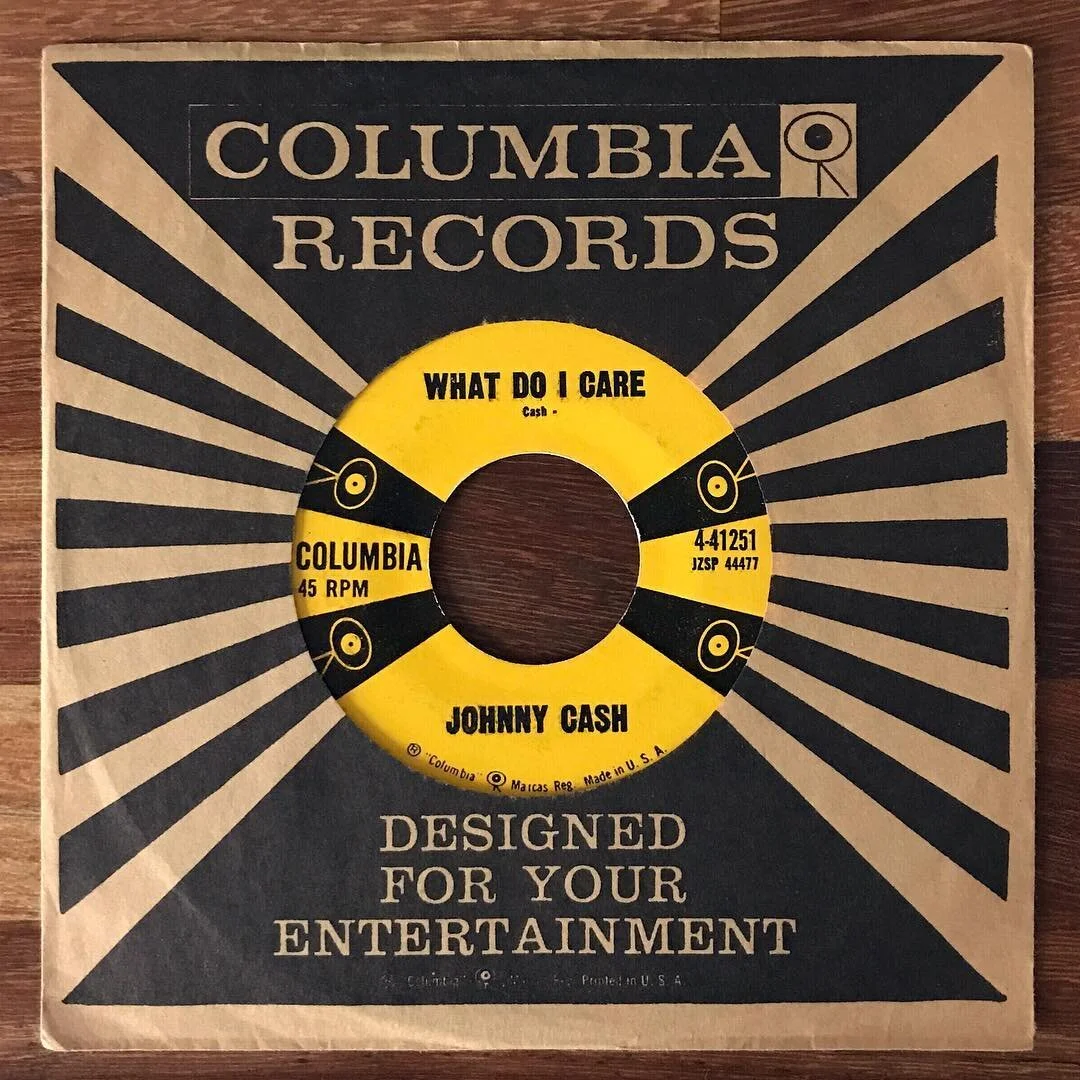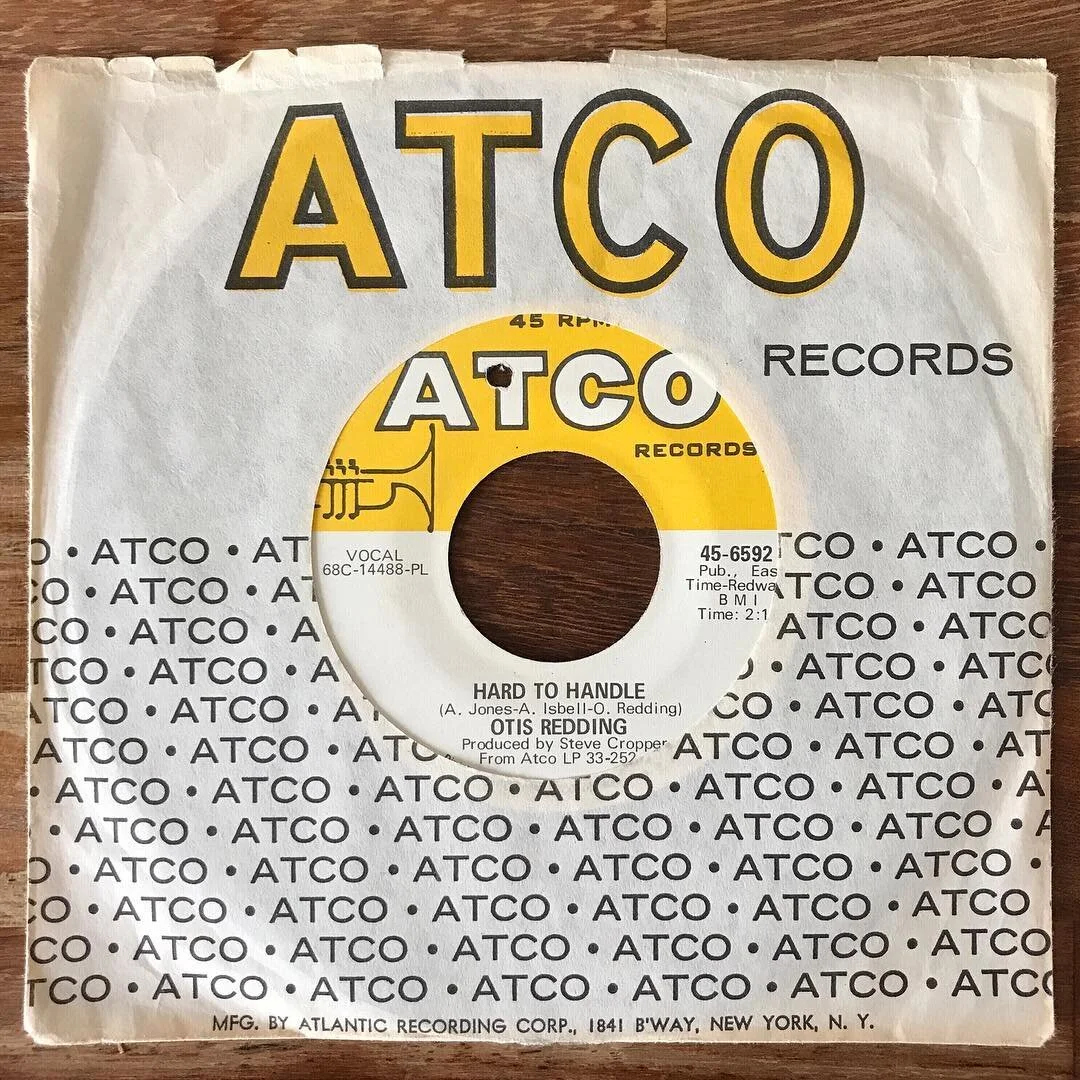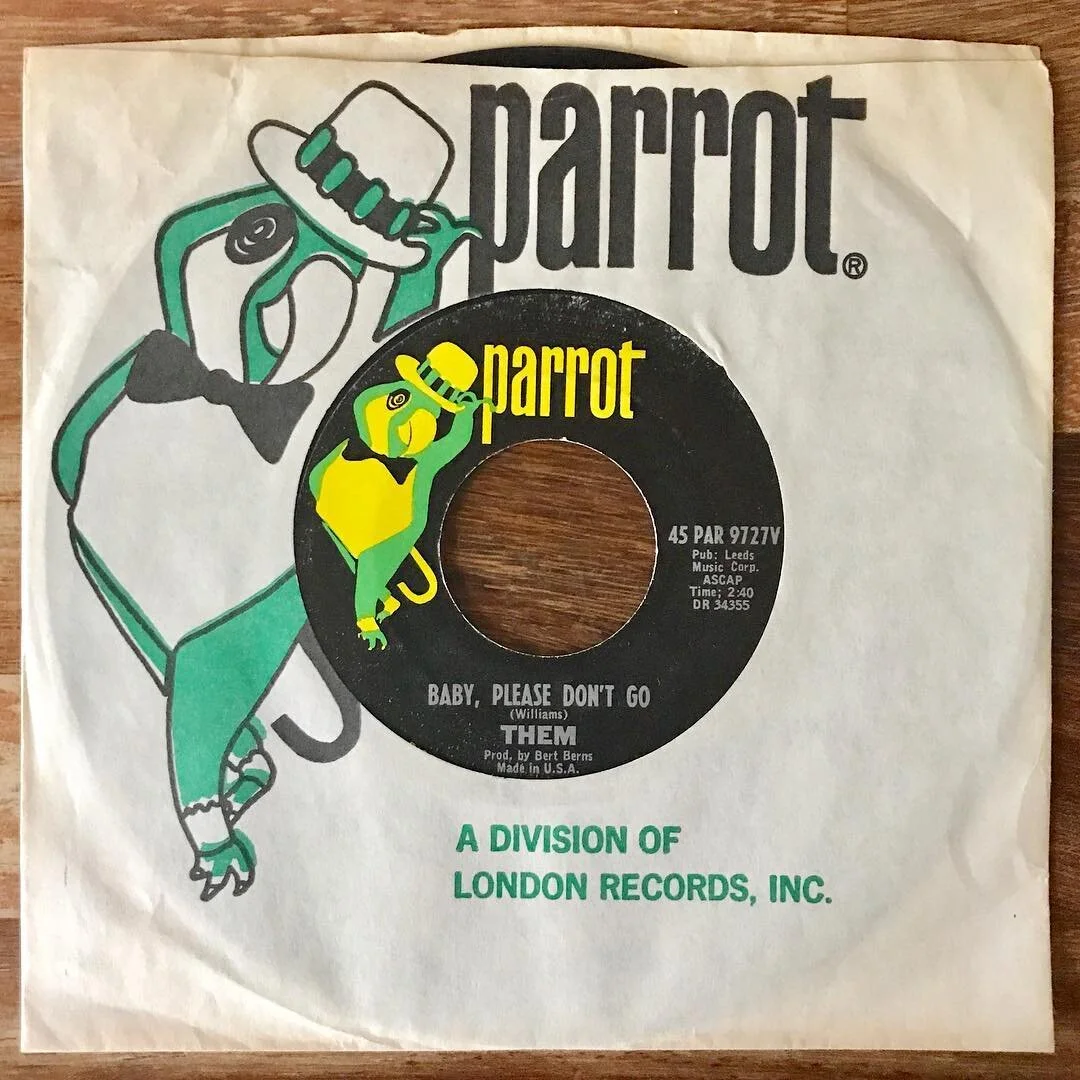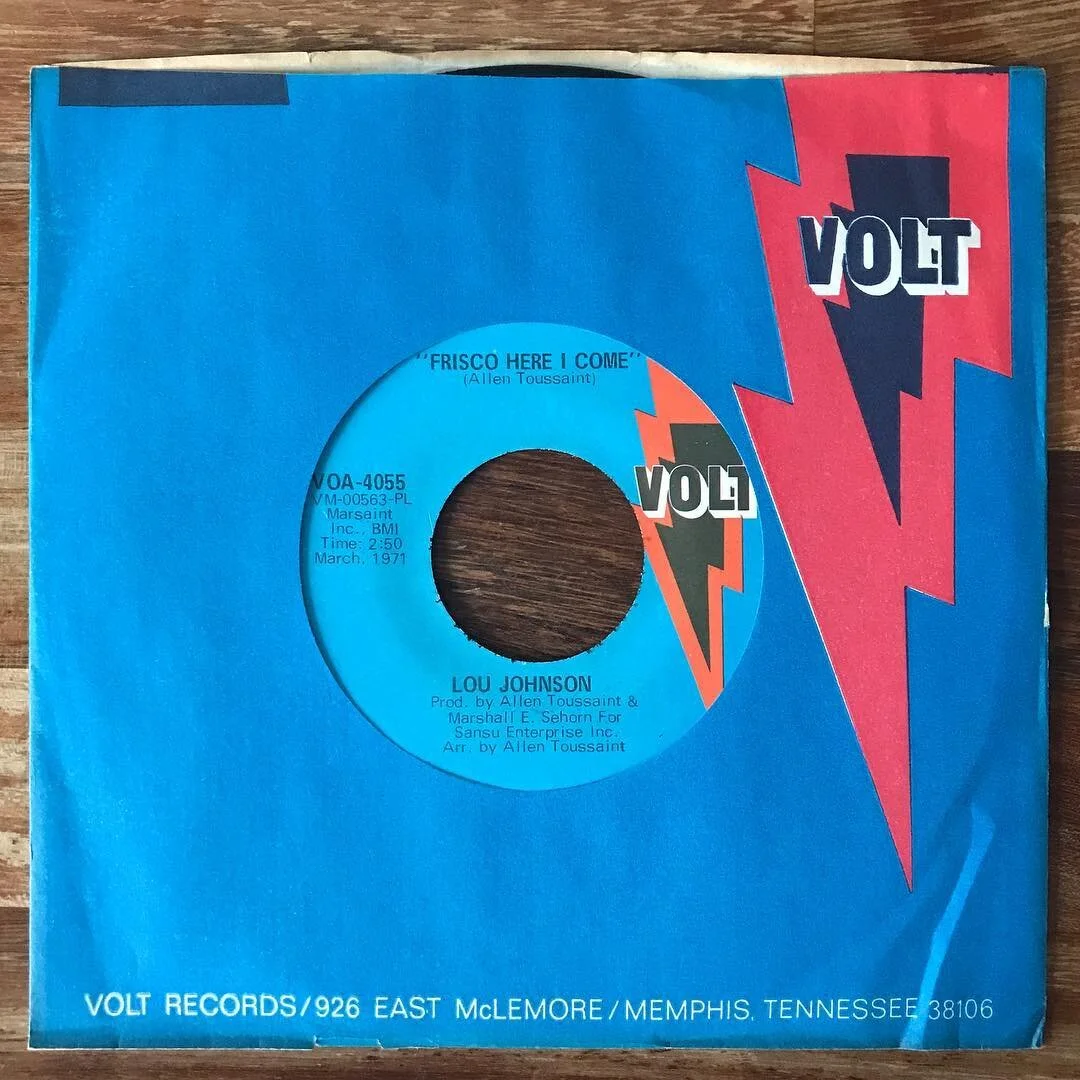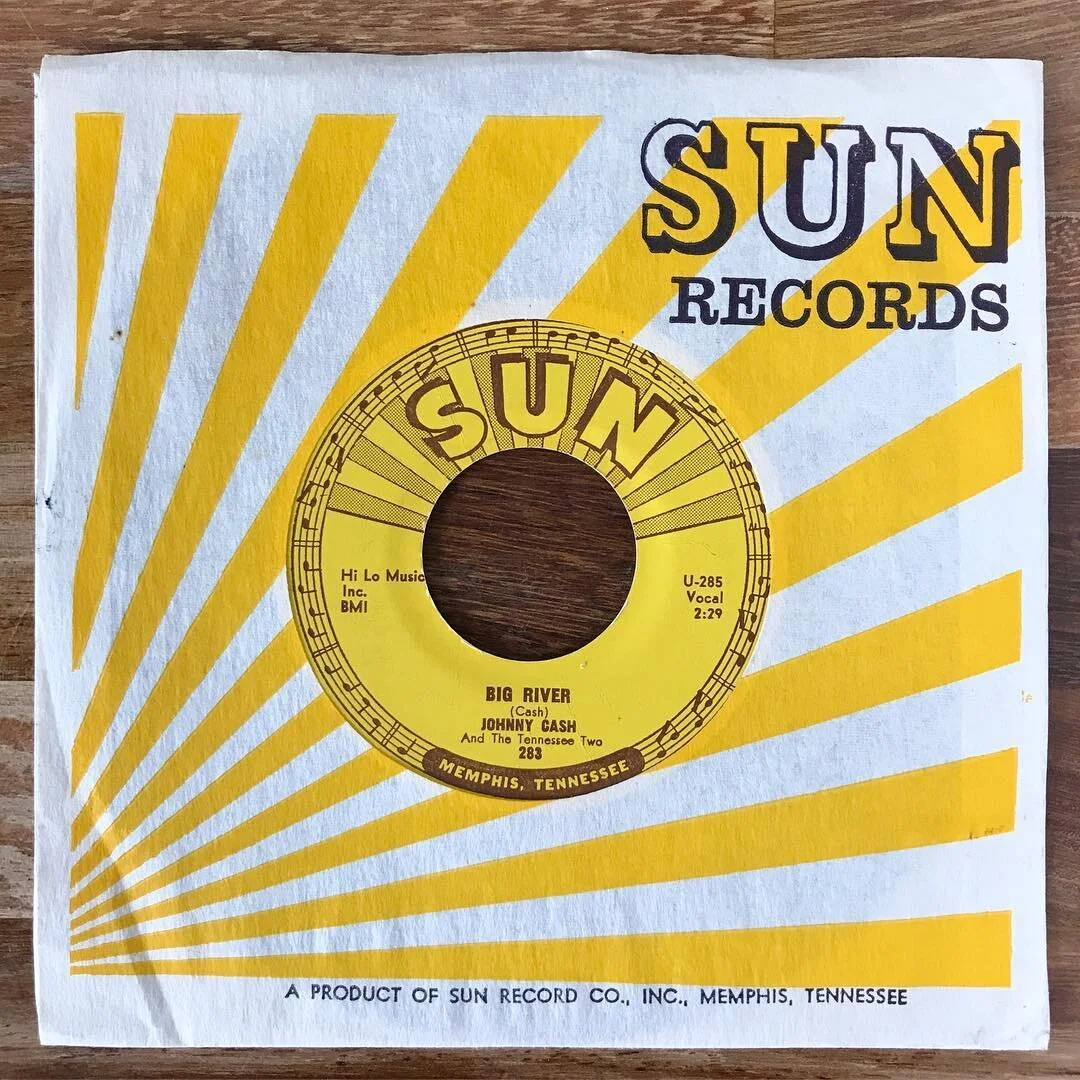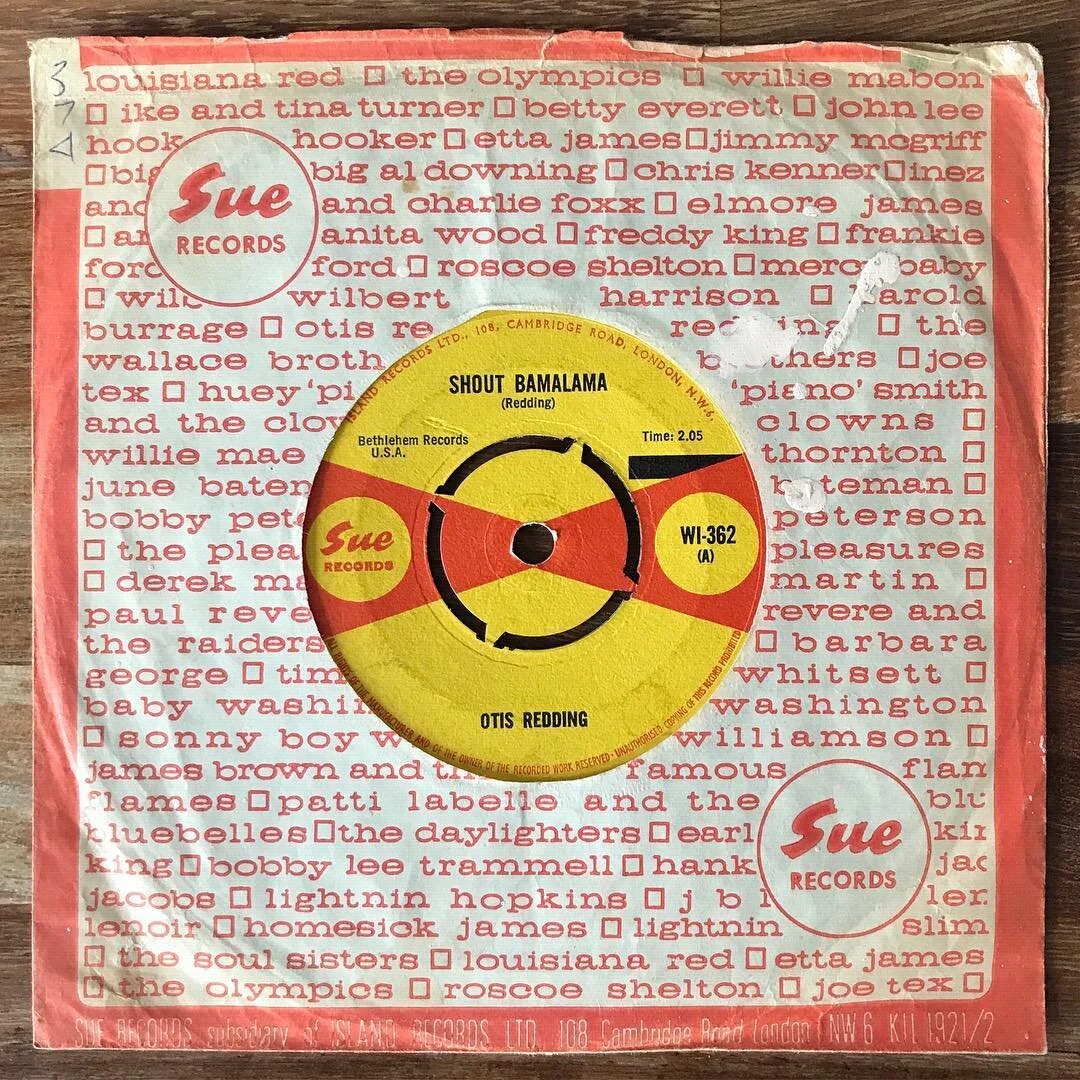@Company45Sleeves Exhibition proposal
Company45Sleeves
A pet project by design journalist and author Gavin Lucas, @company45sleeves is an Instagram feed of lovingly photographed 7" records in their originally issued paper ‘factory’ or ‘company’ sleeves.
There is also a companion Spotify playlist with all the (available) tracks listed in the same order as the Insta-feed.
No other archive like this
There aren’t any readily available online archives of imagery of early 45s pictured in the sleeves they would have been released in. There are various reasons for this. More often than not the flimsy ephemeral paper company sleeves that old 7" records were originally issued with have long since disintegrated. Sleeves that survive tend to be kept separately to the records because collectors of old 45s like to protect their records in pristine card sleeves rather than paper sleeves. Furthermore, it’s tricky to know, for example, which of the 40 or more paper sleeves Atlantic records produced between 1950 and 1980 you should house a particular Atlantic 45 record in.
The importance of being Erling
The idea for Company45Sleeves came to me shortly after I stumbled across a research project by a Norwegian record collector, Erling Mehl, who also wondered what sleeves go with what records and did sterling work researching and publishing the dates that certain sleeve designs were issued and in circulation. Erling is now sadly no longer with us, but the info he collated inspired me to create a rich visual archive of correctly dressed original 45 records on a dedicated Instagram feed. Erling’s work now lives on the site of a UK-based manufacturer of reproduction company sleeves called Big Boppa: sleeves.bigboppa.co.uk
I’ve now posted enough 7” records in their sleeves to cover 8 square metres of wall space. Music is such a predominantly digital experience now that to see these small slabs of plastic, resplendent in their original paper sleeves, would be something of a visual treat – whether you’re a graphic designer, typographer, a collector of anything, or just a music fan. As far as I know, such an exhibition would be the first to pay tribute to the graphic design of both central vinyl labels and their matching company sleeves from the 1950s through to the 1980s. And to the amazing research by Erling Mehl in this field.

